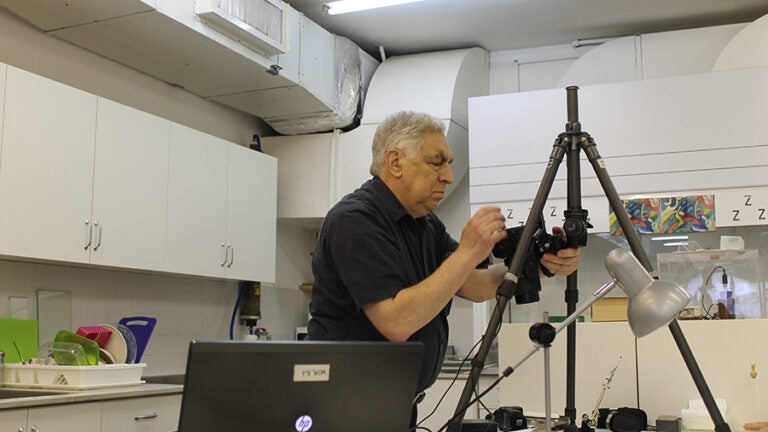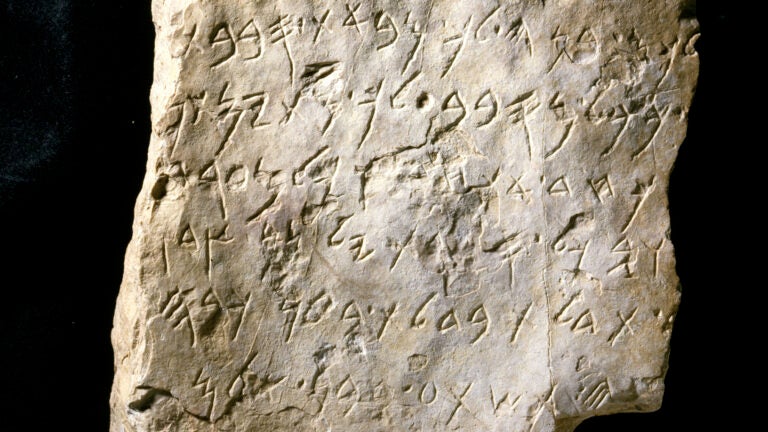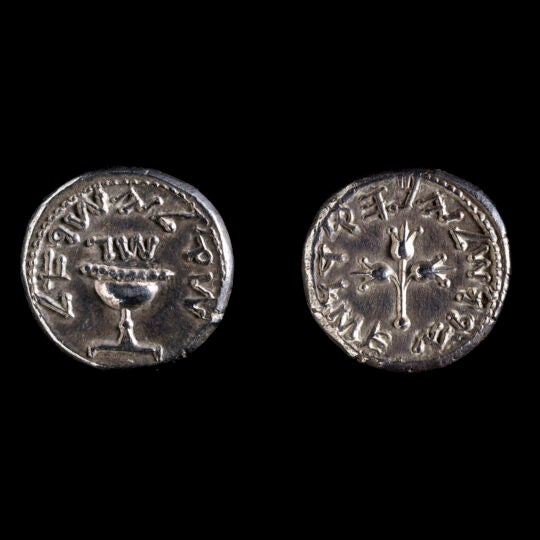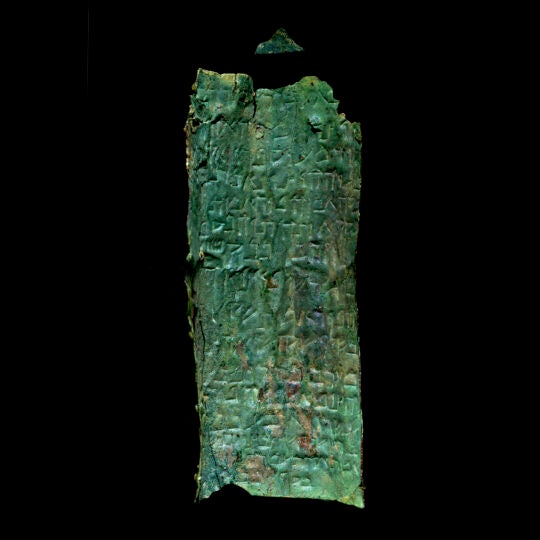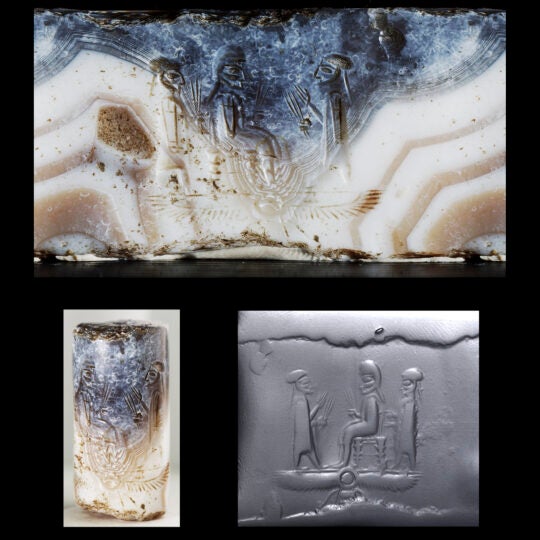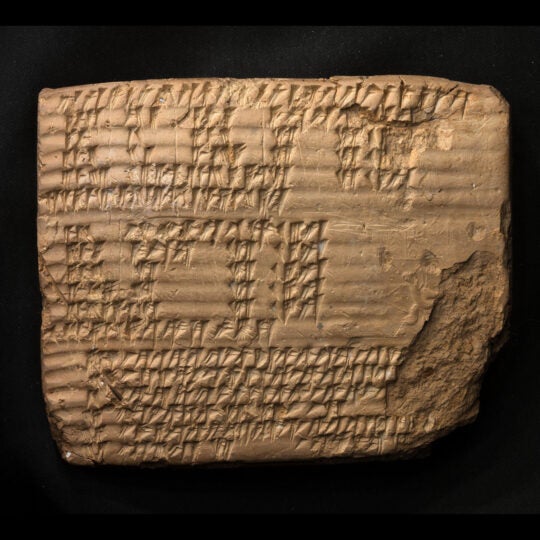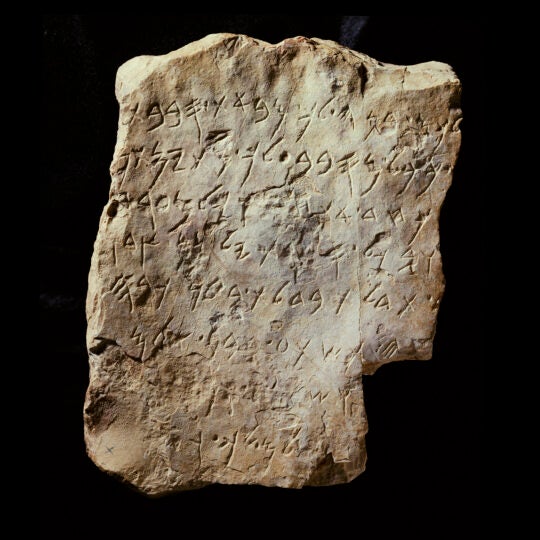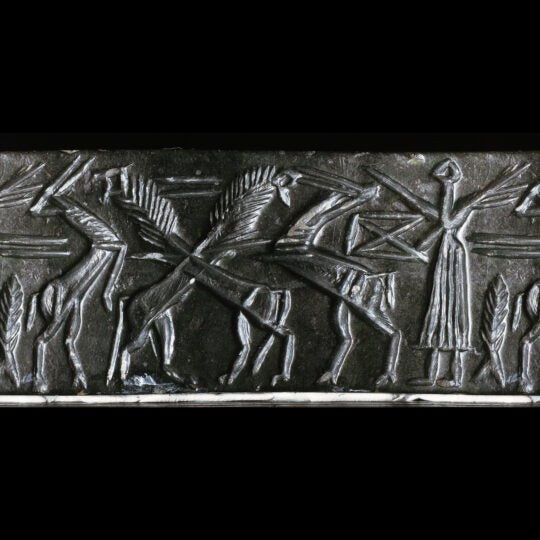West Semitic Research Project
The West Semitic Research Project is an academic project affiliated with the University of Southern California School of Religion and directed by Professor Emeritus Bruce Zuckerman. For the past 40 years WSRP has used advanced photographic and computer imaging techniques to document artifacts and texts from the ancient Near East and Mediterranean worlds. In doing this we have built a vast collection of images that are available to scholars, students, educators and the general public through the USC Digital Library.
About WSRP
WSRP was started in the early 1980s by Bruce Zuckerman and his brother Kenneth. Bruce, a scholar and teacher of the Bible and ancient Semitic languages, was frustrated by the lack of good photographs of important ancient inscriptions. With the help of his brother, Ken, he set out to remedy the situation.
The study of ancient writing is called epigraphy. In this field it has been typical of scholars who read ancient texts to do their own reading, produce a drawing of the text and publish the drawing, translation and transcription as the main tool for study. Photographs, if provided, can rarely be used for study. The reason is that the photographs are either taken by scholars who know little about photography, or by photographers who cannot read what they are looking at and so may miss important data.
The most important principle that governs the work of the WSRP is the combining of good photography with knowledge of the scripts and languages. We believe in training scholars to be good photographers, or at least encouraging them to work closely with photographers to get the best possible results.
For Educators and Students
This site is designed to provide an educational experience for students, teachers and the general public. It includes images of Dead Sea Scrolls, biblical manuscripts and ancient texts relating to the Bible, together with descriptions and informative discussions of the images. We encourage instructors to make these images available, on a non-commercial basis, to their students as a resource in the study of history, culture, religion, biblical studies, and related subjects.
Non-Biblical Ancient Texts Relating to the Biblical World
Biblical Manuscripts
Dead Sea Scrolls
USC Archaeological Research Collection
For Scholars
The image collection of West Semitic Research (WSR) includes a wide variety of inscriptional material, particularly in the languages and scripts of Northwest Semitic. The following is a listing of image collections in high-resolution digital form. Many are subject to arrangements with collaborating institutions. Scholars can use the links here to browse through the image lists.
These images are for study purposes only. Permission to publish must be obtained in writing from WSR and collaborating institutions.
The West Semitic Research Project launched its image database as an Internet database application, InscriptiFact, in 2004. That application is now closed, but the images found on that application, as well as many others, can be found through the USC Digital Library, InscriptiFact–An Image Database of Inscriptions and ArtiFacts.
Inscriptions and Artifacts from the Ancient Near East and Mediterranean
West Semitic Research has photographed many inscriptions and artifacts from around the Mediterranean and ancient Near East. Here are a few images that might be of interest.
First Jewish Revolt Year 3 Silver Shekel, USCARC 10534
Coin from the First Jewish Revolt, 68/69 CE. When the Jews revolted against Rome in the year 65 C.E., they minted their own coins as a symbol of their break from the Roman Emperor. This coin was minted during the third year of the revolt. The obverse (left) shows a Temple vessel, and the inscription “Shekel of Israel” in paleo-Hebrew, the archaic Hebrew alphabet. The reverse depicts pomegranates, and the inscription “Jerusalem the Holy.”
Photograph by Kenneth Zuckerman, West Semitic Research. Courtesy University of Southern California Archaeological Research Collection.
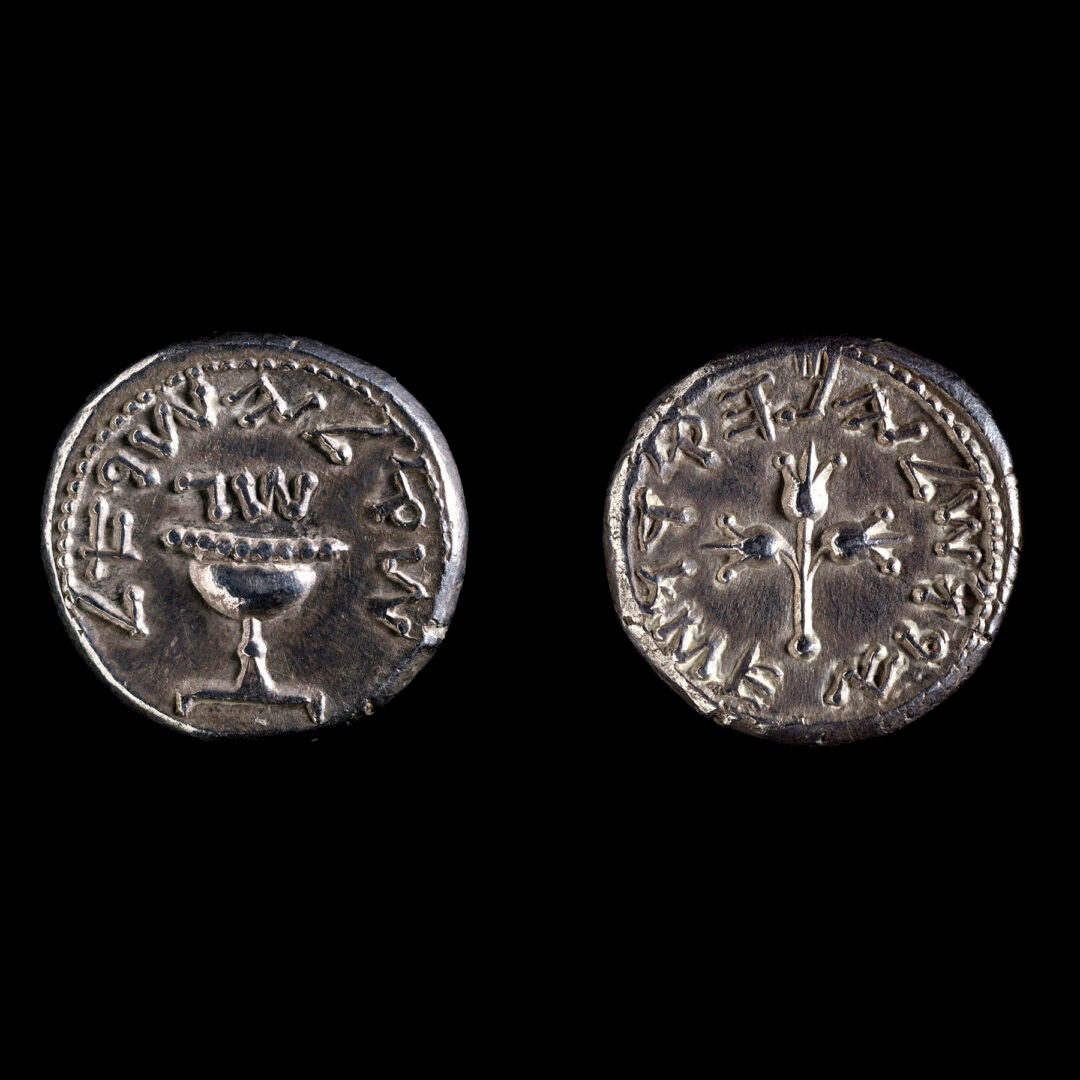
3Q15 Copper Scroll, Cut 15, Column 8
One of the Dead Sea Scrolls, written on copper, early 1st century CE. The Copper Scroll is unique among the Dead Sea Scrolls, being the only one inscribed in metal. The scroll was found in Qumran Cave 3, rolled up into two parts. The copper was so heavily oxidized that it had to be cut into twenty-three half-cylinder segments, rather than unrolled. The text lists a vast quantity of buried treasure. Unfortunately, after 2,000 years the directions for finding the treasure remain rather obscure. One paragraph in Column 8 reads, in Hebrew, “In the irrigation cistern of the Shaveh, in the outlet that is in it, buried at eleven cubits: 70 talents of silver.”
Photograph by Bruce and Kenneth Zuckerman, West Semitic Research. Courtesy Department of Antiquities, Jordan.
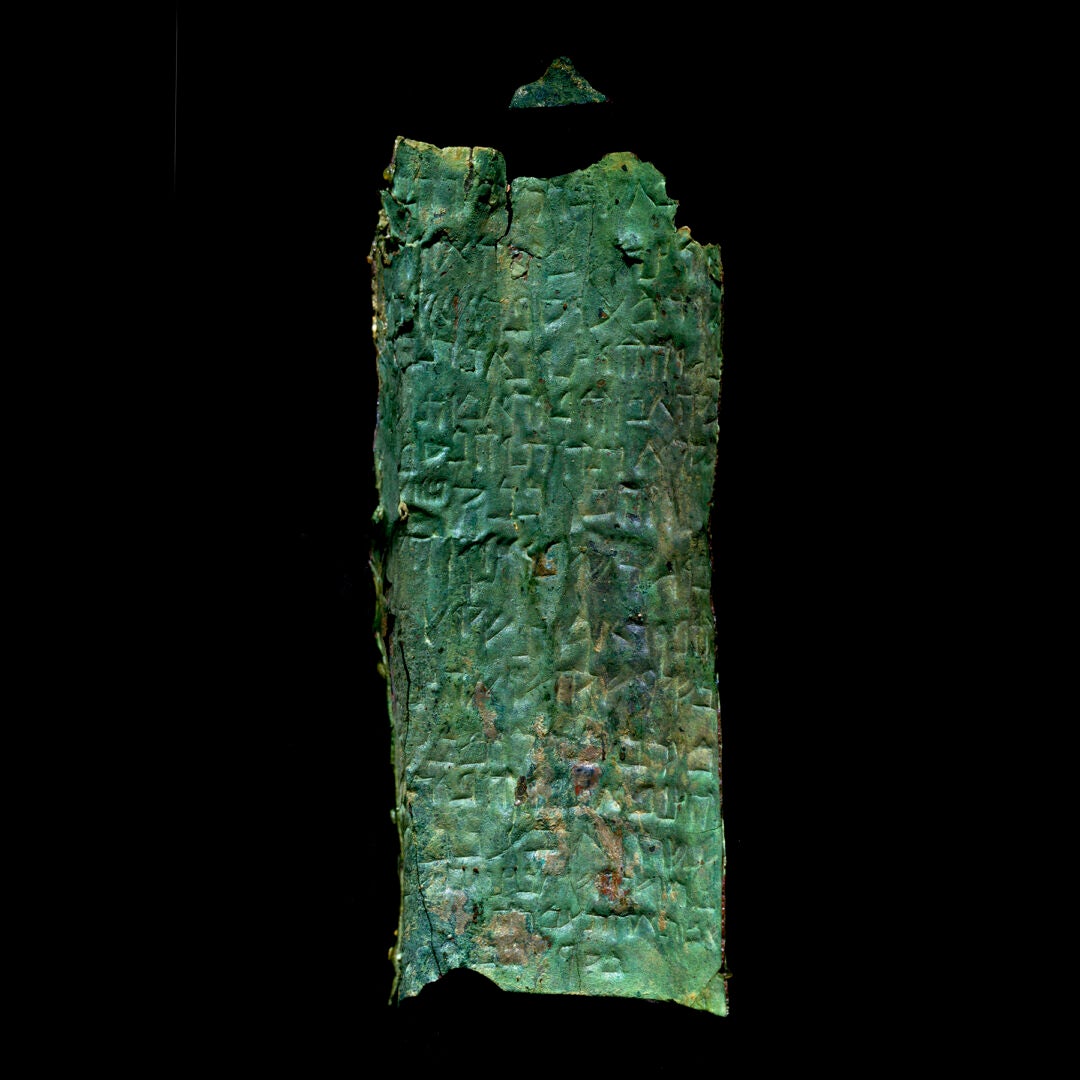
Achaemenid Agate Cylinder Seal, Spurlock 1900.53.0052A
A cylinder seal from the Persian Period c. 5th-4th centuries B.C.E. This is a roll-out image, side view and seal impression image of a cylinder seal in the Spurlock Collection, showing three Magi, or Zoroastrian priests. Each Magus holds a bundle of sticks, and all rest upon a winged sun-disk. Note how the artist has used the pattern in the agate stone to form an apex with the sun-disk.
Photograph by Bruce Zuckerman, Marilyn Lundberg and Wayne Pitard, West Semitic Research. Courtesy Spurlock Museum, University of Illinois Urbana-Champaign.
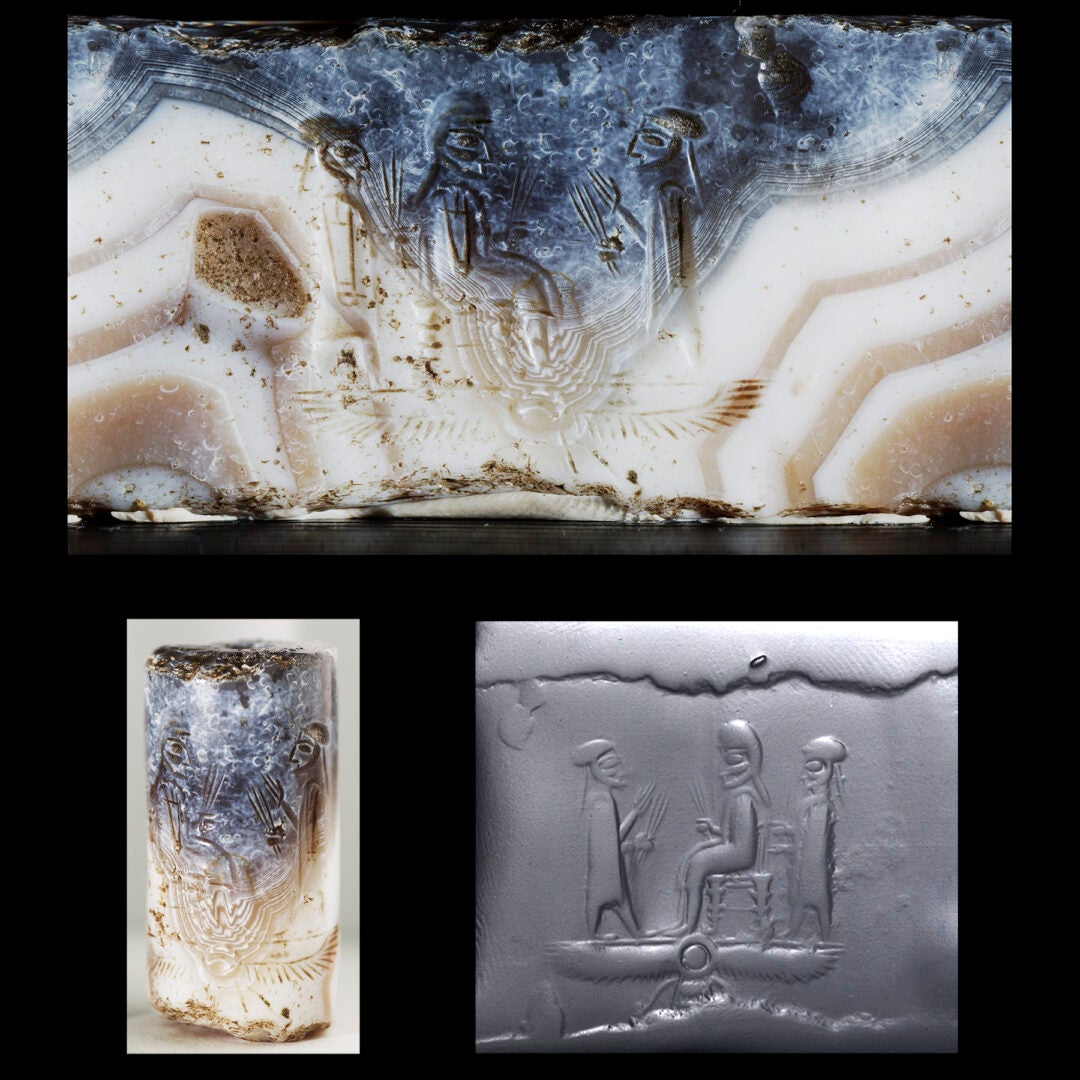
Persepolis Fortification Archive Tablet PF-NN 2196 Obverse
In 1933 archaeologists from the Oriental Institute of the University of Chicago (now the Institute for the Study of Ancient Cultures) found a large group of clay tablets and tablet-fragments in small rooms connected to the fortification wall at Persepolis, the palace complex founded by the Achaemenid king Darius I (522-486 BCE) in the heartland of the Persian Empire. The find spot gave its name to the find: Persepolis Fortification Tablets, an estimated 15,000-30,000 of them. The tablets are administrative records stemming from a single bureau of regional administration based at Persepolis; they were written in the middle of the reign of Darius I, about 509-494 BCE, and they thus record an administrative system that touched every stratum of Achaemenid imperial society, from the lowliest workers through bureaucrats and governors to the royal family itself.
Photograph by the Institute for the Study of Ancient Cultures (formerly the Oriental Institute), University of Chicago, and West Semitic Research. Courtesy the ISAC, University of Chicago.
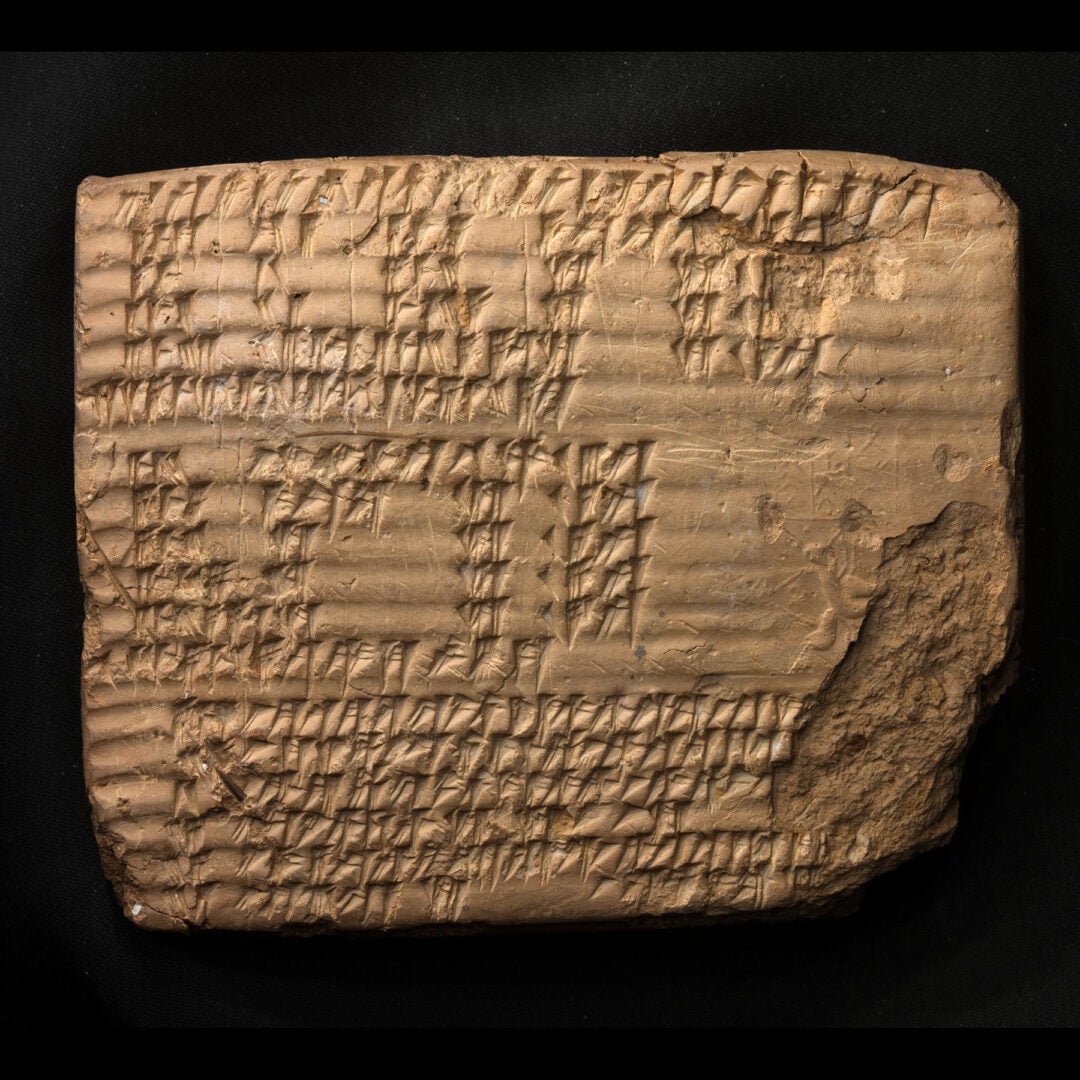
Amman Citadel Inscription, 9th c. BCE
The Ammonite inscription pictured here was found in the 1960s on the site of the Citadel, or fortress, of Amman, Jordan, ancient Rabbath-Ammon. It is generally believed to be a building inscription, of either a temple or the Citadel itself, although some have suggested that it is an oracle or instruction from the god Milkom, god of the Ammonites.
This is the most extensive text as yet discovered in the Ammonite language.
Photograph by Bruce and Kenneth Zuckerman, West Semitic Research. Courtesy Department of Antiquities, Jordan.

Early Dynastic III Serpentine Cylinder Seal, Spurlock 1900.53.0112A
Cylinder Seal rollout from c. 2500-2350 BCE. Cylinder Seals are small objects carved from stone or shell, about the size of a AAA battery, up to a size D battery. They were used much like a signet ring in the Middle Ages, or a credit card today, in that they were rolled across clay tablets to verify a person’s participation in an economic transaction. In other words, they were the ancient equivalent of a signed charge card.
Photograph by Bruce Zuckerman, Marilyn Lundberg and Wayne Pitard, West Semitic Research. Courtesy Spurlock Museum, University of Illinois Urbana-Champaign.
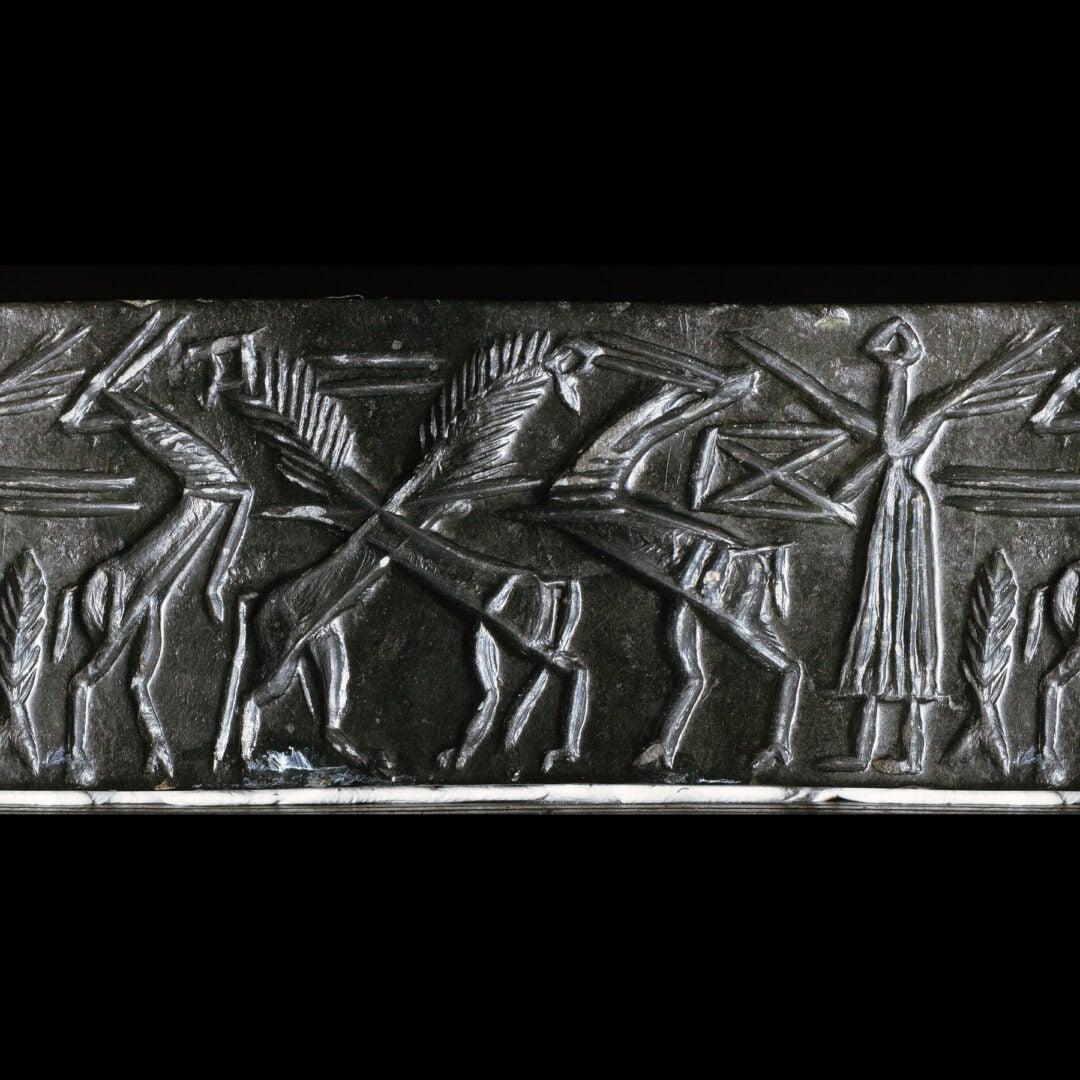
Primary Participants
The West Semitic Research and InscriptiFact Projects are indebted to a whole host of colleagues and collaborators in our many projects over the years. The core of the team includes Bruce Zuckerman, his brother Kenneth, Marilyn Lundberg Melzian and Li Hunt.
Dr. Bruce Zuckerman
Dr. Bruce Zuckerman is Emeritus Professor of Hebrew Bible in the School of Religion at the University of Southern California, where he taught courses in the Hebrew Bible, the Bible in Western Literature, the Ancient Near East, and Archaeology. He received his Ph.D. in ancient Near Eastern Languages from Yale University and is a specialist in Northwest Semitic languages. He directs the West Semitic Research Project and the InscriptiFact Project. He specializes in photographing ancient texts including numerous projects involving the Dead Sea Scrolls. His book, Job the Silent: A Study in Biblical Counterpoint, was published in 1991 by Oxford University Press and The Leningrad Codex: A Facsimile Edition, for which he and his brother Kenneth did the principal photography, was published in 1998. He is co-author of a collection of essays, Double Takes, published in 2005. He has published numerous research articles on ancient texts from biblical times and his photographs have been featured in many scholarly publications as well as in a number of popular venues.
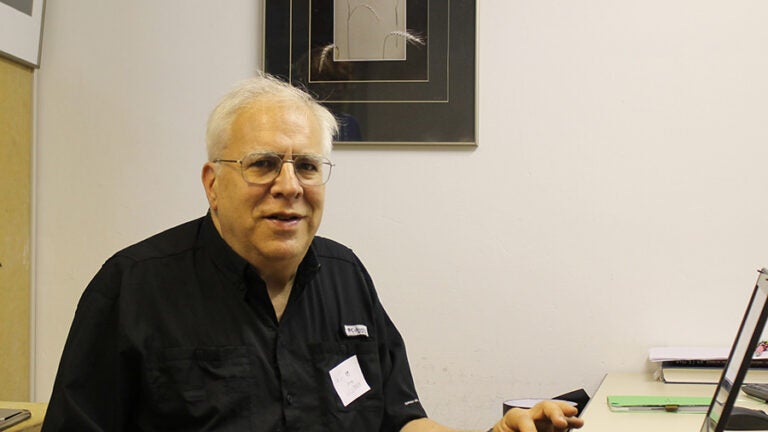
Dr. Marilyn Lundberg Melzian
Dr. Marilyn Lundberg is the Archive and Imaging Research Specialist – West Semitic Research/InscriptiFact Archive for the University of Southern California. She received her Master of Divinity from Fuller Theological Seminary and her Ph.D. from Claremont Graduate University in Religion (Old Testament). She is co-editor, with Stephen A. Reed, of The Dead Sea Scrolls Catalogue published by Scholars Press in 1994; with Bruce Zuckerman, Associate Editor of The Leningrad Codex: A Facsimile Edition, published by Eerdmans and Brill in 1998; and with Steven Fine and Wayne T. Pitard, co-editor of Puzzling out the Past: Studies in the Northwest Semitic Languages and Literature in Honor of Bruce Zuckerman, published by Brill in 2012.
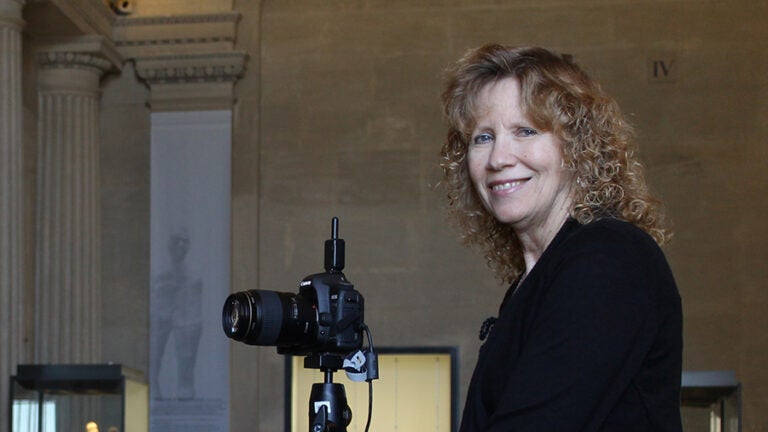
Leta Hunt
Dr. Leta Hunt is Associate Director of InscriptiFact. She has a Ph.D. in Psychology and a M.A. in Library and Information Science from the University of Illinois. She provides leadership for the database and application development and systems engineering teams. She also serves as the primary interface with commercial technical businesses, independent consultants, and consulting firms. She received the Computerworld Honors Medal of Achievement on behalf of the InscriptiFact application development team for the InscriptiFact Digital Library, April, 2004. Since 2020 she has focused primarily on preservation of the West Semitic Research/InscriptiFact archive of images and metadata in order to bring these materials into a secure, long-term preservation environment at the USC Digital Repository and to make them available through the USC Digital Library for the foreseeable future.
Kenneth Zuckerman
Kenneth Zuckerman is a graduate of Princeton University 1967 (B.S.E. with High Honors) and the California Institute of Technology 1968 (M.S.). He continued work at Caltech until 1971. While at Caltech he worked as a research assistant analyzing and photographing materials and equipment brought back from the Moon by the Apollo Program. An expert in technical photography and computer imaging, in the 1970’s he formed a partnership with his brother Bruce Zuckerman to photograph biblical-era antiquities. He developed the procedures and techniques used by West Semitic Research and has trained numerous scholars on the techniques needed to scholarly document ancient documents and objects. With the West Semitic Research team he has photographed a wide range of ancient texts and objects in the United States, Europe, and the Middle East. His work has been widely published in many scholarly journals, and books.
